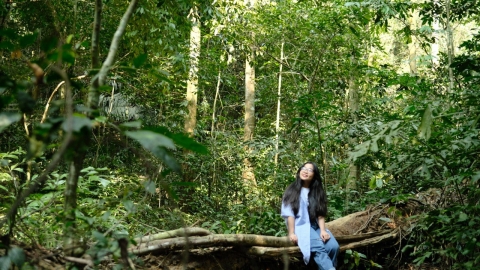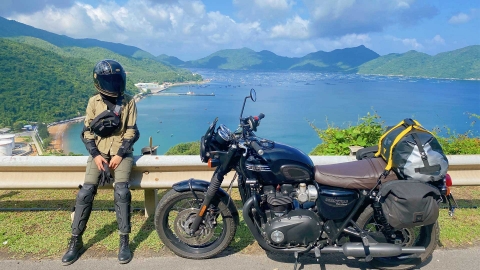In 2023, the entire tourism industry of Nghe An will welcome 8,360,000 tourists, including 5,280,000 overnight visitors and 77,500 international visitors. Tourism revenue will reach VND 7,800 billion, equal to 139% compared to 2022. Traffic connecting destinations in the province is increasingly invested in, upgraded and completed, with many flights operated from Vinh airport to domestic and international airports, making it easier than ever for tourists to come to Nghe An. With increasingly diverse and rich tourism products, along with the available potential of each locality, Nghe An is increasingly chosen as a familiar destination by domestic and international tourists.
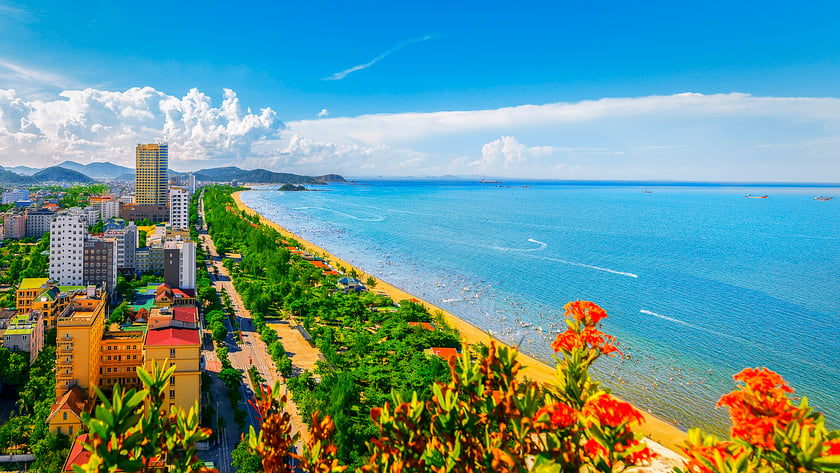
Warm sunny Cua Lo. Photo: Nguyen Canh Hung
Travel back to the Western region of Nghe An to experience eco-tourism and community tourism
The winding roads along the mountain ranges and large rivers open up breathtaking views. The Western region of Nghe An, with its countless majestic natural landscapes, is an attractive community tourism destination.
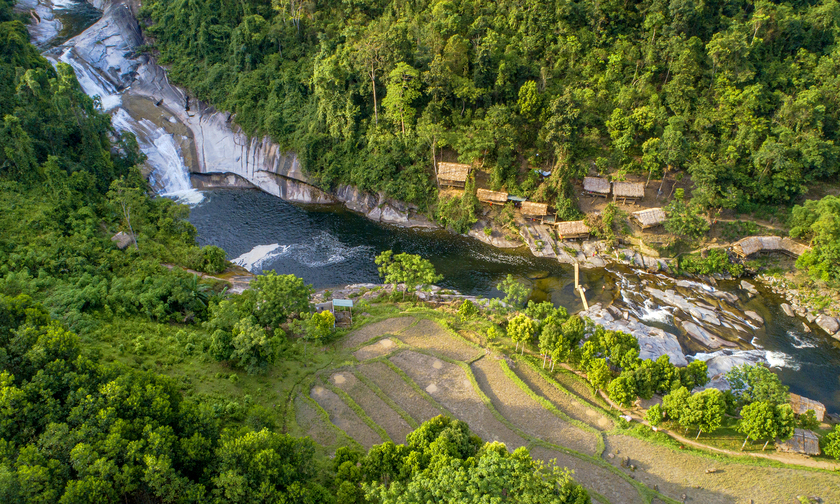
Que Phong Seven-Level Waterfall - Le Quang Dung.
Spring is here, come to Nghia Dan to explore and experience attractive eco-tourism destinations. The vitality of trees, in the warm atmosphere of the first days of spring, is even more joyful in eco-tourism areas such as Hon Mat or Truong Gia Farm. The green ecosystem, fresh air and many types of flowers blooming in the spring sky attract tourists more than ever. In particular, Nghia Lam sunflower field blooms right on the occasion of Tet, welcoming Spring, and is the destination of many tourists from all over.

Kayaking on the Giang River.
Summer is the ideal time to explore the Pha Lai eco-tourism area in Con Cuong district. In the scorching heat of Nghe An summer, there is perhaps nothing better than immersing yourself in the Pu Mat wilderness, admiring the poetic beauty of Giang River, then immersing yourself in the pure coolness of Khe Kem waterfall - the most pristine waterfall in Vietnam. Visitors can experience the famous Con Cuong cuisine with dishes such as grilled hill chicken, local pork, grilled cool fish, five-color sticky rice... rich in the flavor of Western Nghe An.
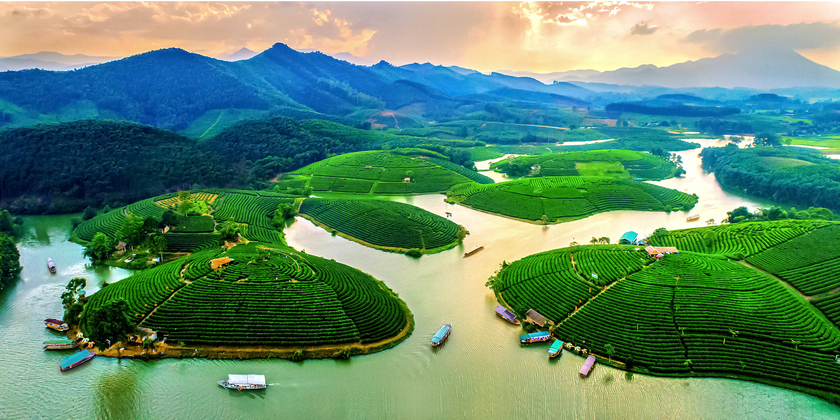
Thanh Chuong tea island is green in the early morning sun. Photo: Le Quang Dung.
In autumn, Thanh Chuong tea island appears with a magical beauty in the thin mist. Leisurely on a cruise, circling the green tea islands, the charming landscape unfolds before your eyes like a "picture". Therefore, the old folk song has a saying:
"The road to Nghe An is winding
"Green mountains and blue water like a picture"
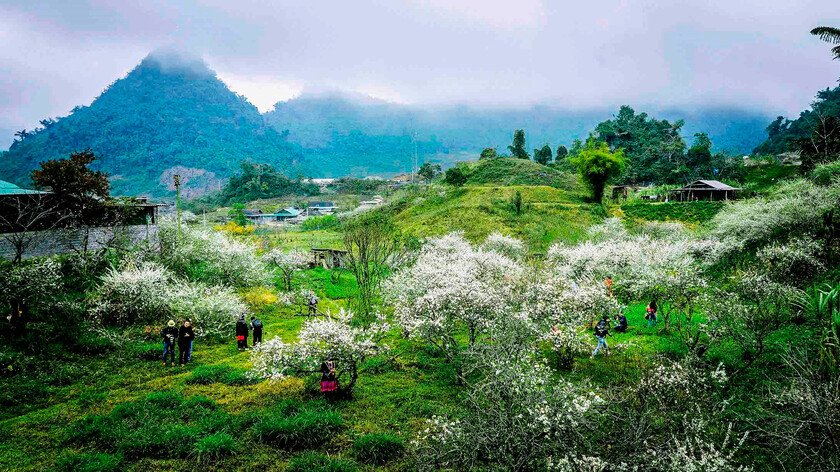
Beautiful scenery of Muong Long valley. Photo: Collected
When winter comes, the border region of Nghe An makes travelers excited. Conquering the high border of Ky Son with Puxailaileng peak is the dream of most adventure travel enthusiasts. The roof of the Northern Truong Son range, with an altitude of 2,720 m, challenges the courage of those who have the desire to conquer the primeval forest and admire the majestic scenery of the high mountains. 100 km from Puxailaileng, Muong Long valley with a temperate climate all year round, is likened to a "fairyland" when winter comes. Plum and peach blossoms bloom all over the sky, throughout the forests, along the mountain slopes, bringing vitality to the villages covered in clouds in the middle of winter.

Community tourism in the Western region of Nghe An. Photo: Collected
Discover spiritual tourism, immerse yourself in folk festivals imbued with Nghe An's identity
Nghe An owns 2,600 historical and cultural relics stretching from the sea to the high mountains, associated with beliefs and religions or famous people, events and having architectural, artistic, historical and cultural values. The long-standing traditional flow and the accumulation of fertile "alluvial deposits" and containing many "sediments", Nghe An is the ideal destination for tourists to experience the beauty of cultural and spiritual life.
Spiritual tourism in Nghe An is famous for its "four sacred temples" (four famous temples) as stated in the saying: "First Con, second Qua, third Bach Ma, fourth Chieu Trung". Chieu Trung Temple no longer exists, but the three remaining temples are still "sacred addresses" for tourists from all over the world. Con Temple worships the Four Holy Ladies; Qua Temple worships Uy Minh Vuong Ly Nhat Quang; Bach Ma Temple worships the brave general Phan Da - these are the gods of fortune, deeply worshiped by the people for generations.
In spring, everywhere in Nghe An is bustling with joy and celebration. Van Cua Rao Temple Festival is one of the major festivals, an opportunity for visitors to experience the cultural identity of the people of Tuong Duong district. Coming to Con Temple Festival, visitors will be immersed in the joyful atmosphere and enjoy the beautiful scenery, culinary flavors and feel the depth of the cultural life of Hoang Mai district.
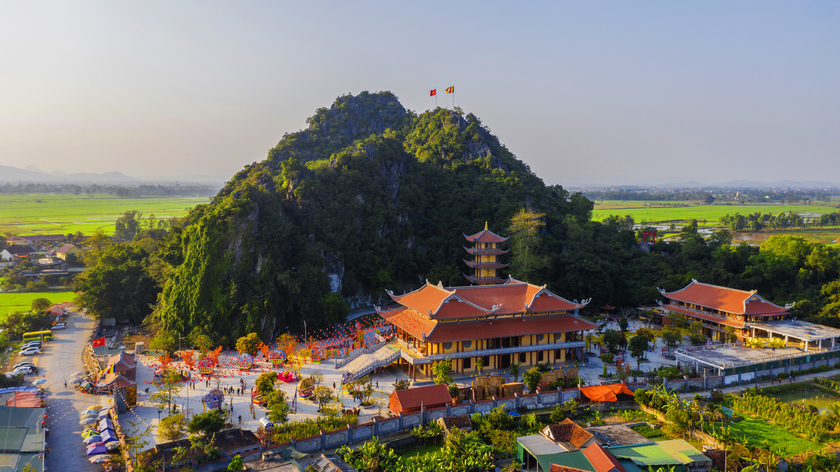
Co Am Pagoda - Dien Chau. Photo: Ho Xuan Thanh
At the beginning of the year, tourists from all over come to Nghe An to make pilgrimages to the ancient and famous sacred pagodas. Can Linh Pagoda (Su Nu Pagoda) dates back to the 9th century, built on an area of 5208 m2, surrounded by Thien Nhan, Dai Hai, Hong Linh, Chung mountains and a beautiful architectural system located in the center of Vinh city.
It is impossible not to mention Co Am Nghe An Pagoda - where the largest statue of Quan Am in Vietnam is located. The pagoda was built in the 15th century, with a blend of modern and ancient architecture, and is the place where major annual festivals take place. Or Dai Tue Pagoda, the only place to worship Buddha Mother Dai Tue in Vietnam, is one of the most famous cultural landscapes of the North Central region.

Morning mist on Dai Tue Pagoda - Nam Dan. Photo: Le Quang Dung.
Visit the heritage site of the "spiritual land and talented people"
Mentioning Nghe An is talking about "heritage land", because this countryside has a long history and tradition, has 9 national intangible cultural heritages, is the homeland of heroes and heroes who have made great contributions to the cause of building and defending the country. Many famous heritages, many historical relics associated with the formation and development of the homeland and the country, with folk songs Vi and Giam recognized as intangible cultural heritage of humanity are present in Nghe An.
Starting from Vinh city, tourists can visit Ho Chi Minh Square and Uncle Ho Monument, go up Dung Quyet mountain to visit Emperor Quang Trung temple and enjoy the panoramic view of the city, and visit museums in Nghe An. Come to Hoang Muoi temple (Hung Nguyen) - a famous sacred temple, people from all over the country often make pilgrimages to offer offerings and pray.

Ho Chi Minh Square.
Go to the South Gate to see the remaining vestiges of Vinh Citadel, associated with the struggle against the French colonialists and the Nghe - Tinh Soviet movement (1930 - 1931), and the Cung Team's uprising (1/1941). The ancient, moss-covered beauty of the Citadel over time is a witness to the ups and downs of history and builds the traditional pride of Nghe An.
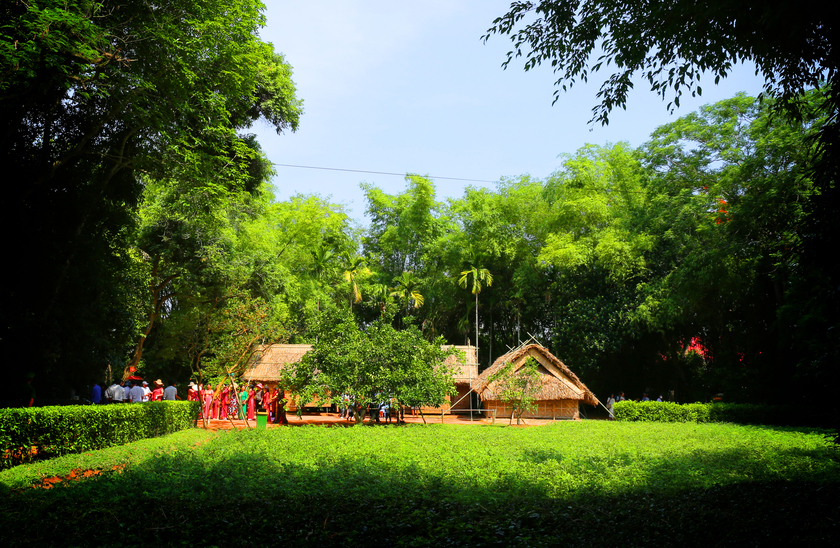
President Ho Chi Minh's hometown, Nam Dan. Photo: Nguyen Anh Dung
Continue up to Nam Dan, the hometown of President Ho Chi Minh to visit the Kim Lien National Special Relic Site. The relic site includes the paternal home of Lang Sen, the maternal home of Hoang Tru, the tomb of Mrs. Hoang Thi Loan (Uncle Ho's mother) and Chung Son Temple (where President Ho Chi Minh's ancestors are worshiped).
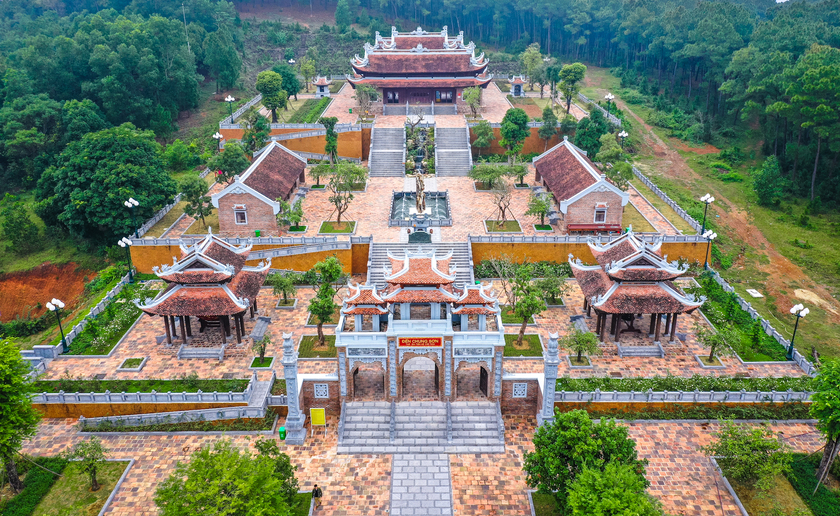
Chung Son Temple from above. Photo: Ngo Tran Hai An
Coming to Do Luong, visit Truong Bon National Historical Site - a "red address" to educate revolutionary traditions for today's and future generations. Here, there are heroic relics, marking the heroic feats and sacrifices of our army and people in the great national defense struggle of the 20th century.







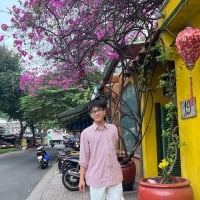










.jpg.jpg)







